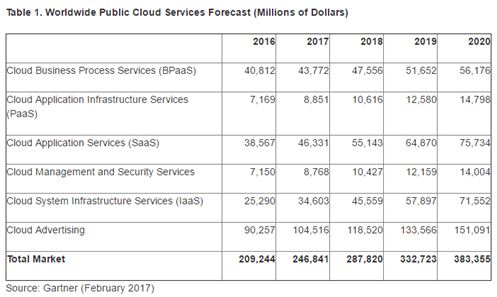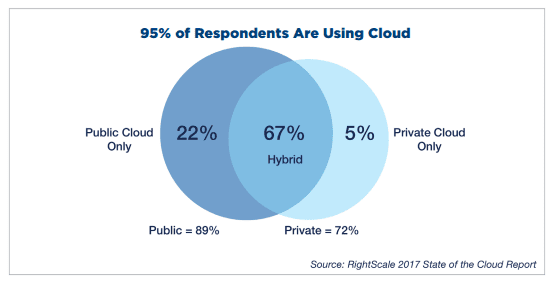Public cloud computing is one of the fastest-growing markets within enterprise IT. It allows anyone to gain immediate access to computing resources via the Internet and pay for those resources based on how much they consume. Since launching around 2006, public cloud has completely reshaped the enterprise IT industry, prompting vast changes in how datacenters are managed.
Protecting your company’s data is critical. Cloud storage with automated backup is scalable, flexible and provides peace of mind. Cobalt Iron’s enterprise-grade backup and recovery solution is known for its hands-free automation and reliability, at a lower cost. Cloud backup that just works.
Gartner defines public cloud computing as “a style of computing where scalable and elastic IT-enabled capabilities are provided as a service to external customers using Internet technologies—i.e., public cloud computing uses cloud computing technologies to support customers that are external to the provider’s organization.”
In simple terms, public cloud services are computing resources accessed via the Internet that customers can buy from a third-party provider. That’s different from a private cloud, which are services that organizations or individuals set up for their own use, and a hybrid cloud, which is a combination of public and private clouds that are managed together. To help you decide which type of cloud platform is for you, and for help deciding on a specific company for cloud services, read our comprehensive guide to cloud computing.
According to IDC’s Worldwide Semiannual Public Cloud Services Spending Guide, the market for public cloud services will likely be worth $122.5 billion in 2017, which is a 24.4 percent increase over 2016. “Over the 2015-2020 forecast period, overall public cloud spending will experience a 21.5 percent compound annual growth rate (CAGR) – nearly seven times the rate of overall IT spending growth,” says the report. “By 2020, IDC forecasts public cloud spending will reach $203.4 billion worldwide.”
Using a different methodology, Gartner forecasts, “The worldwide public cloud services market is projected to grow 18 percent in 2017 to total $246.8 billion, up from $209.2 billion in 2016.” Sid Nag, research director at Gartner, adds, “Through 2020, cloud adoption strategies will influence more than 50 percent of IT outsourcing deals.”

And the RightScale 2017 State of the Cloud Report found that 89 percent of enterprises are using the public cloud. In fact, the study showed that the public cloud usage is increasing while private cloud is on the wane.

Enterprises are choosing to use the public cloud because it offers several benefits over other types of cloud computing and traditional data centers.
In the early days of public cloud computing, enterprises usually cited costs as their number one reason for using the cloud, but that has changed in recent years. Currently, the top reasons for using the public cloud include the following:
Despite the numerous benefits of the public cloud, challenges remain. From the earliest days of cloud computing, cloud security has been a major concern for enterprises. Organizations have been hesitant to give up control of sensitive information and entrust it to a vendor. And in some industries, compliance requirements mean that using the public cloud for some data is difficult or impossible.
In recent years, however, a growing chorus of experts has been convincing enterprise IT managers that the public cloud may actually offer superior security to in-house data centers. After all, the thinking goes, the major public cloud vendors have many more security professionals on staff than smaller firms do, so they may do a better job of securing their networks.
In fact, in the 2017 RightScale survey, security was tied with lack of resources/expertise and managing cloud spend as the top challenge experienced by respondents, with quarter of those surveyed said that they had experienced each. Other public cloud challenges affecting quite a few organizations included compliance (23 percent), governance/control (23 percent) and managing multiple cloud services (22 percent).
Over time, the perception of cloud security has largely reversed, with many experts claiming the cloud is actually more secure than private data centers.
With organizations citing managing multiple cloud services as a key challenge, it should come as no surprise that most organizations now use more than one public cloud vendor. The “multi-cloud” model is now gaining credence as the accepted model for public cloud use. On average, organizations use 3.6 different public cloud services, according to the RightScale survey.
Companies and organizations have many different vendor options to choose from, most of which offer a free trial period or a free pricing tier for some services. Some of the most popular vendors for infrastructure as a service (IaaS) and platform as a service (PaaS) include the following:
Many enterprises integrate their public and private clouds into hybrid clouds. This allows them to keep some data and applications in their own data centers — often for compliance or security reasons — while integrating with the public cloud services they use. This approach has become very popular, and in the RightScale survey, 58 percent of enterprises said that they were pursuing a hybrid cloud strategy for 2017. And Garter predicts that by 2020, “hybrid will be the most common usage of the cloud.”
However, building a hybrid cloud can be challenging as organizations need tools and employees with the ability to manage multiple private and public cloud platforms.
Looking for a puiblic cloud solution? Read our cloud comparison guide.
SEE ALL
Datamation is the leading industry resource for B2B data professionals and technology buyers. Datamation's focus is on providing insight into the latest trends and innovation in AI, data security, big data, and more, along with in-depth product recommendations and comparisons. More than 1.7M users gain insight and guidance from Datamation every year.
Advertise with TechnologyAdvice on Datamation and our other data and technology-focused platforms.
Advertise with Us
Property of TechnologyAdvice.
© 2025 TechnologyAdvice. All Rights Reserved
Advertiser Disclosure: Some of the products that appear on this
site are from companies from which TechnologyAdvice receives
compensation. This compensation may impact how and where products
appear on this site including, for example, the order in which
they appear. TechnologyAdvice does not include all companies
or all types of products available in the marketplace.